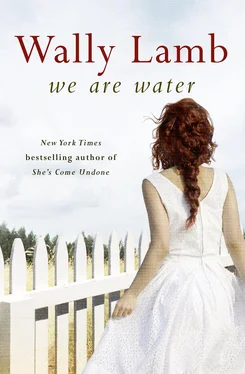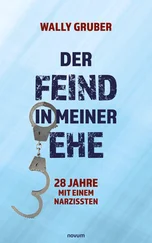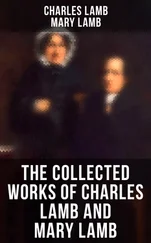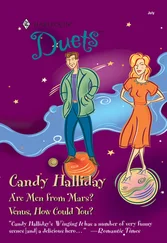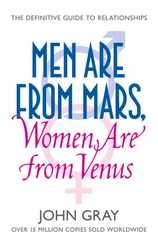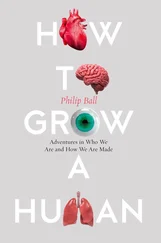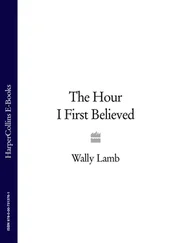“Yes, that’s right. Little Fanny and her jump rope. I’ve painted her hundreds of times.” I explain to my guest that it was my good fortune to have received a scholarship to the school at the Art Institute of Chicago when I was sixteen years old, and how my training there helped to shape my artistic vision. “At first I merely imitated the styles of the painters I most admired. The impressionists and expressionists, the pointillists. But little by little, I began developing a style of my own, which one of my teachers described in his evaluation as ‘boldly modern with a freshness of vision.’ I don’t mean to boast, but I began to be recognized as one of the three most promising students at the school, the others being my friends Antonio Orsini, who came from the Bronx and loved the New York Yankees more that life itself, and Norma Kaszuba, an affable Texan who wore cowgirl boots, smoked cigars, and swore like a man.”
“A woman before her time,” Miss Arnofsky notes. “But tell me about your jump-roping girl.”
“Well, I spotted her one afternoon when Norma, Antonio, and I were eating our lunch in Grant Park. She was just a nameless little Negro girl in a shapeless gray dress, skipping rope and singing happily to herself. Her wiry hair was in plaits. Her face was turned up toward the sun in joyful innocence. As I recall, my friends and I had been arguing about whether Roosevelt, the president-elect, would prove to be a savior or a scoundrel. And as the others’ voices faded away, I pulled a pencil from my pocket and, on the oily paper in which my sopressata sandwich had been wrapped, began sketching the child. Back at the school that afternoon, I drew the girl over and over, and in the days that followed I began painting her in gouache and oils, in primary colors and pastels and monochromatic shades of green and gray. It was as if that guileless child had bewitched me! I gave her a name, Fanny, and came to think of her as my muse. For my final project, I submitted a series of sixteen works, collectively titled Girl Skipping Rope . On graduation day, I held my breath as one of the Institute’s capped-and-gowned dignitaries announced, ‘And this year’s top prize is awarded to … Gualtiero Agnello!’ It was the thrill of a lifetime. And as you can see, capturing Fanny has become a lifelong obsession.”
“Fascinating,” my guest says. “You know, I Googled you before I came over here today. You’ve had shows at several major museums, haven’t you?”
“Oh, yes. MoMA, the Corcoran, the Whitney. One of my paintings was purchased for the Smithsonian’s permanent collection a while back—a study of my little rope-jumping angel over there.”
“Wikipedia said you were born in Italy.”
“Yes, that’s right. In the city of Siena.”
“Ah, Tuscany! Well, that was certainly fortuitous. So many great artists came from that region. Who would you identify as your early influences?”
“Well, my parents and I moved to America when I was quite young, so none of the masters. I’d have to say I was drawn to art by my father.”
“He was an artist?”
“Not by trade, no. He was a tailor. But among my earliest and fondest memories is having sat long ago on his lap at a table outside the Piazza del Campo, watching, wide-eyed, as Papa’s pencil turned blank paper into playful cartoon animals for me. His ability to do so had seemed magical to the little boy I was. But sadly, my parents fell on hard times after my father’s tailor shop was burned to the ground by the vengeful husband of his mistress. It was Papa’s brother, my Uncle Nunzio, who came to our rescue. He assured my father that Manhattan has thousands of businessmen and they all needed suits. He sent money, too—enough American dollars which, converted to lira, allowed Papa to purchase three passages to New York. And so we left Siena, boarded a ship at the port in Livorno, and traveled across the ocean. I still remember how frightened I was during that long voyage.”
“Frightened? Why?”
“Because I thought we would never be free of that endless, shapeless gray water—that we were doomed to sail the sea forever. But twelve days after we left Livorno, we passed La Statua della Libertà and arrived on American soil.”
“And you were how old?”
“Eight. Of course, at that age, I could only understand bits and pieces of the reasons for our uprooting. But years later, after my own sexual desires had awakened, Papa confided to me that he had not wished to be unfaithful to my mother, but that his inamorata , Valentina, had a body by Botticelli and hair so flaming red that she might have stepped out of a painting by Titian. You see, my father was a clothier by trade, but his passione was art. He was like Josephus Jones in that respect. He’d had no formal training, but he had a natural talent and an undeniable urge to draw. He was seldom without his pencil and portfolio of onionskin paper. ‘A gift from God,’ my mother once called her husband’s artistic talent, although she would later describe it as ‘my Giuseppe’s curse.’”
“And why was that?”
“Because it unhinged him. Made him crazy. That’s often the case, of course—that creation and madness begin to dance with each other.”
“Like Van Gogh.”
“Yes, Van Gogh and many others. Painters, writers, musicians.”
She nods. Sighs. “So your family settled in New York?”
“Lower Manhattan, yes. We lived above Uncle Nunzio’s grocery market in a four-story tenement on Spring Street. Nunzio knew someone who knew someone, and soon my father was altering men’s suits at Macy’s Department Store on Herald Square. And while Papa was measuring inseams, sewing shoulder pads into suit coats, and letting out the trousers of fat-bellied businessmen, I was mastering proper English in the classrooms of the Catholic Sisters of the Poor Clares and learning broken English at Uncle Nunzio’s grocery market, where I worked after school and every Saturday. In warm weather, my job was to sell roasted peanuts from the barrel outside on the sidewalk. During the winter months, I was brought inside to wait on the customers.” I chuckle as I recall the kerchiefed nonnas who came by each day to shop for their family’s dinner and haggle over the prices of fruit and vegetables. Cagey Siciliani for the most part, who would first bruise the fruit they had selected and then demand a reduced price because the fruit was bruised. “At school, my teacher, Sister Agatha, took a shine to me and, because she thought I would make a good priest, urged me to pursue the sacrament of Holy Orders. But I was my father’s son on two counts: first, when I was in the eighth grade, I surrendered my virginity to a plump ‘older woman’ of sixteen who was fond of roasted peanuts. And second, I loved to draw. Seated on a stool next to my peanut barrel, I began sketching the Packards and roadsters parked along Spring Street, the passersby rich and poor and the fluttering garments hanging from clotheslines, the birds who flew in the sky and the pigeons who waddled along the sidewalk, pecking away at morsels. I filled sketchbook after sketchbook, eager to show Papa my latest drawings when he returned home from his day of tailoring. My father smiled very little back then, but he beamed whenever he looked at my pictures.”
“Like father, like son,” she says.
“Well, yes and no. Papa was unschooled, as I said. But when I was fifteen, one of my drawings won a prize: art lessons. And so each Saturday morning, freed from my job at Uncle Nunzio’s, I would ride my bicycle up Fifth Avenue to the Metropolitan Museum of Art, where I would receive instruction from a German painter named Victorious von Schlippe. Like Uncle Nunzio, Mr. von Schlippe knew people who knew people, and the following year, at the age of sixteen, I was offered the scholarship at the Art Institute.”
Читать дальше
